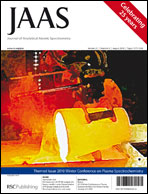Chemical vapor generation (CVG) using tetrahydroborate(III) remains the most popular and successful derivatization procedure enabling gaseous sample introduction into analytical atomic spectrometers that are routinely used for the determination of trace and ultratrace amounts of hydride-forming elements as well as Cd and Hg. The number of elements amenable to tetrahydroborate(III)-derivatization has recently been extensively enlarged. Despite its many obvious advantages, drawbacks remain, such as significant interferences from transition metals. Consequently, many alternative approaches have been developed to overcome these shortcomings and to further expand the suite of elements amenable to CVG for sample introduction. This article reviews these non-tetrahydroborate-based approaches, including photochemical vapor generation (photo-CVG), borane complexes CVG, alkylation based on Grignard reactions and derivatization with NaBEt4, cold vapor generation with SnCl2, halide generation, electrochemical hydride generation, oxide generation, and generation of volatile chelates. Special attention is given to two newly developed CVG approaches: photo-CVG and reduction in the presence of cyanoborohydrides.

You have access to this article
 Please wait while we load your content...
Something went wrong. Try again?
Please wait while we load your content...
Something went wrong. Try again?


 Please wait while we load your content...
Please wait while we load your content...